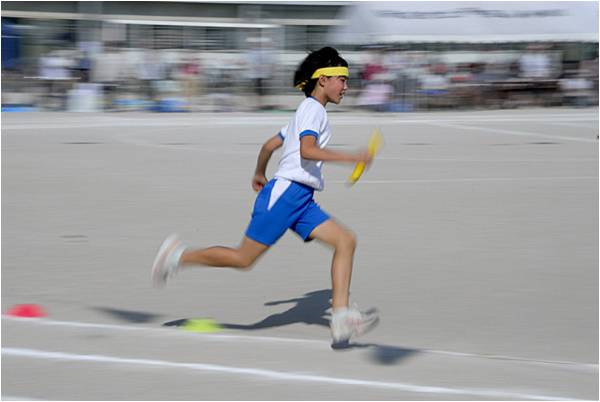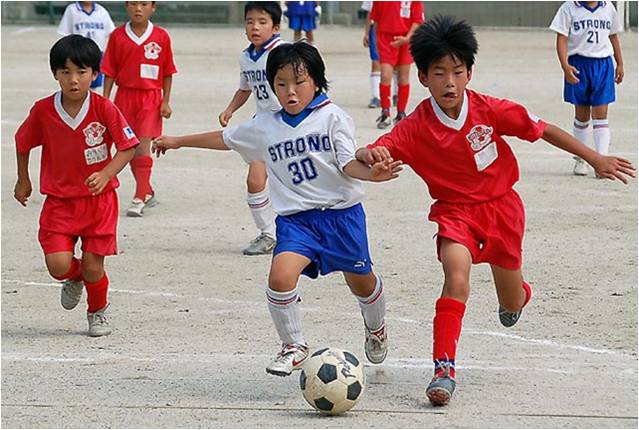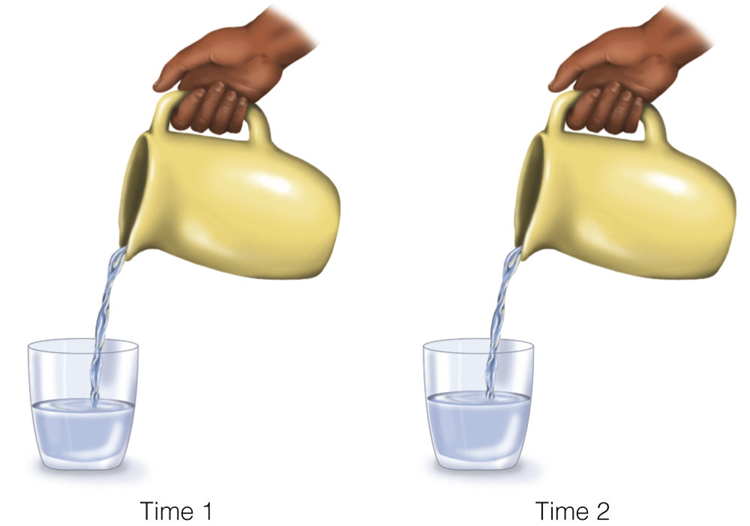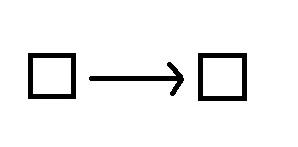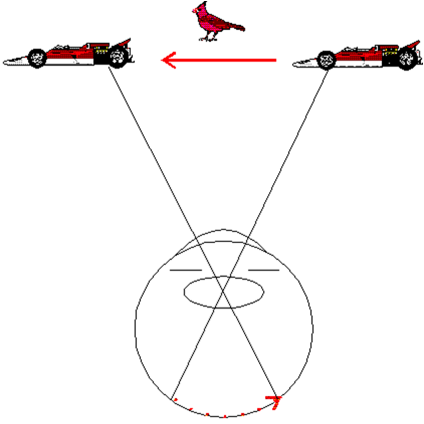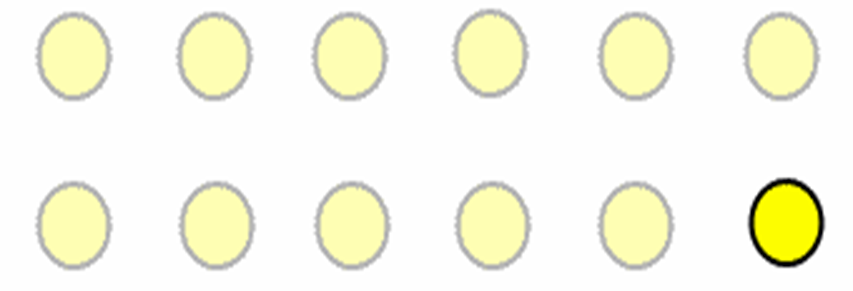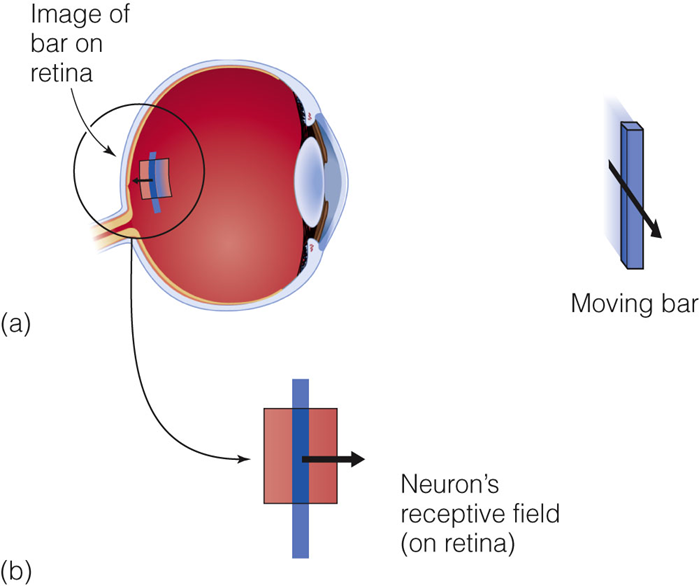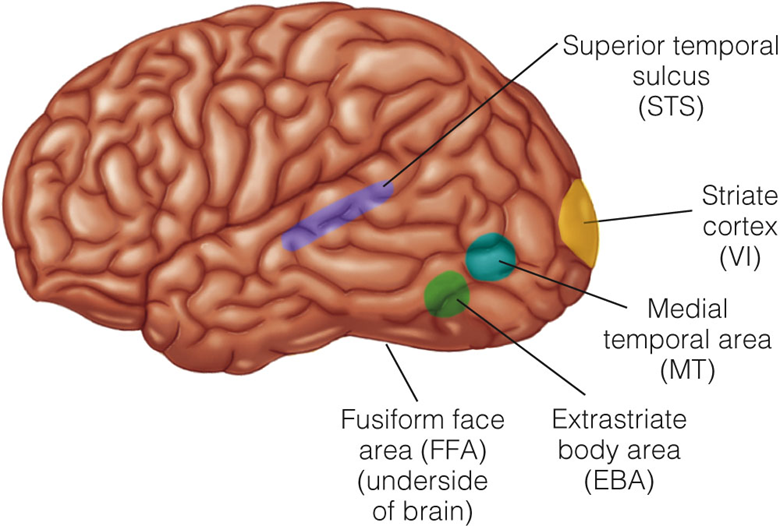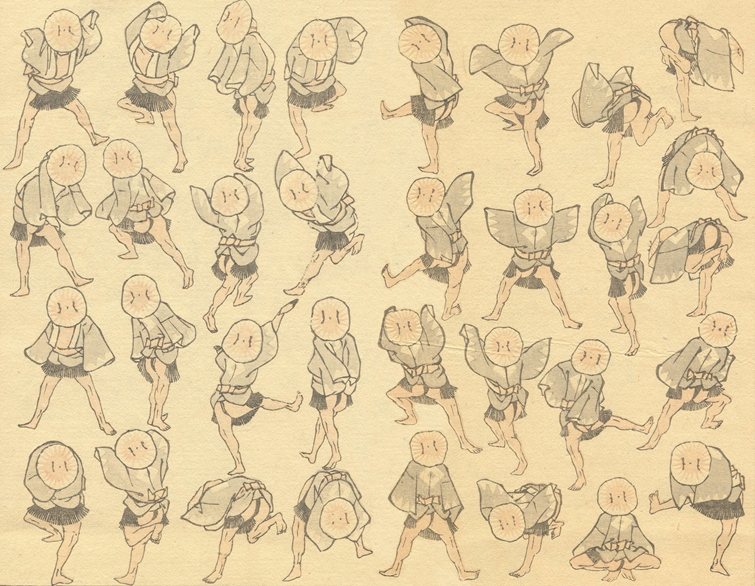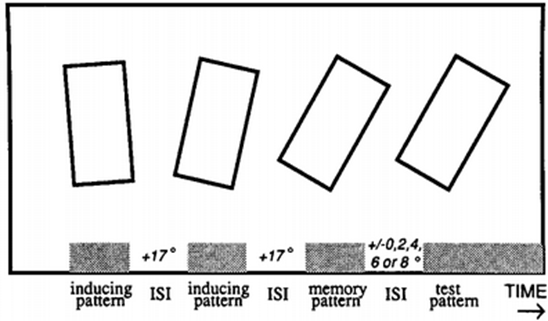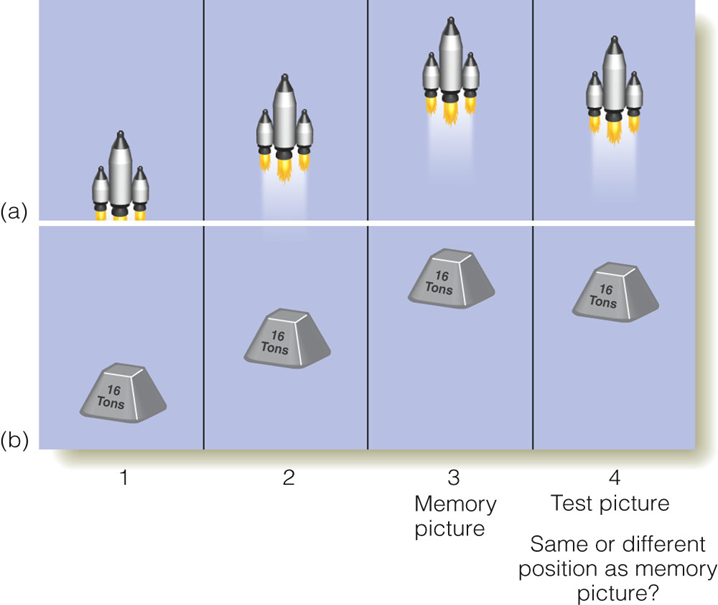第八講:Perceiving Motion
出自KMU Wiki
(修訂版本間差異)
| 在2014年1月14日 (二) 13:29所做的修訂版本 (編輯) Woody (對話 | 貢獻) (→CD theory) ←上一個 |
當前修訂版本 (2018年1月8日 (一) 01:59) (編輯) (撤銷) U104007026 (對話 | 貢獻) (→Troxler's effec) |
||
| (7個中途的修訂版本沒有顯示。) | |||
| 第39行: | 第39行: | ||
| *Figure 8.4 (P.180) | *Figure 8.4 (P.180) | ||
| + | *[http://www.grand-illusions.com/images/articles/opticalillusions/dragon_illusion/dragon.pdf 可自行下載DIY製作] | ||
| *另一例 | *另一例 | ||
| **[http://en.wikipedia.org/wiki/File:Gathering_For_Gardner_Dragon.ogv 動畫] | **[http://en.wikipedia.org/wiki/File:Gathering_For_Gardner_Dragon.ogv 動畫] | ||
| 第53行: | 第54行: | ||
| [[Image:08phi phenomenon.png]] | [[Image:08phi phenomenon.png]] | ||
| *[http://www1.psych.purdue.edu/Magniphi/index.html phi實驗動畫] | *[http://www1.psych.purdue.edu/Magniphi/index.html phi實驗動畫] | ||
| - | ===Troxler's | + | ===Troxler's effect=== |
| *另外一種運動錯覺 | *另外一種運動錯覺 | ||
| **[http://mesosyn.com/mental8-14.html 網頁連結] | **[http://mesosyn.com/mental8-14.html 網頁連結] | ||
| 第70行: | 第71行: | ||
| *Motion-induced blindness | *Motion-induced blindness | ||
| - | **高亮度的刺激因週遭運動而消失 | + | **高亮度的刺激因週遭運動而消失 [http://www.michaelbach.de/ot/mot-mib/index.html 影片] |
| - | + | ||
| *Wagon-wheel effect | *Wagon-wheel effect | ||
| **車輪會反轉(?)[http://www.michaelbach.de/ot/mot_wagonWheel/index.html 影片一] [http://en.wikipedia.org/wiki/File:Propeller_strobe.ogv 影片二] | **車輪會反轉(?)[http://www.michaelbach.de/ot/mot_wagonWheel/index.html 影片一] [http://en.wikipedia.org/wiki/File:Propeller_strobe.ogv 影片二] | ||
| 第136行: | 第136行: | ||
| ===有空試試之材料=== | ===有空試試之材料=== | ||
| - | + | *參照第184頁 figure 8.12 | |
| + | |||
| ===有空試試的情境=== | ===有空試試的情境=== | ||
| - | + | *參照第184頁 figure 8.13 | |
| + | |||
| ===下課就可以玩的=== | ===下課就可以玩的=== | ||
| - | + | *參照第185頁 figure 8.14 | |
| ==Real-motion neuron== | ==Real-motion neuron== | ||
| - | + | *參照第185頁 figure 8.15 | |
| *前圖說明 | *前圖說明 | ||
| **細胞在眼睛不動、物體運動時反應(圖8.23a),但當眼睛轉動而物體不動時卻不反應(圖8.23b)。由於這兩物種情況在網膜上的投影是相同的,因此此類細胞應該也考量了眼球運動的訊息,並針對真實運動的物體反應 | **細胞在眼睛不動、物體運動時反應(圖8.23a),但當眼睛轉動而物體不動時卻不反應(圖8.23b)。由於這兩物種情況在網膜上的投影是相同的,因此此類細胞應該也考量了眼球運動的訊息,並針對真實運動的物體反應 | ||
| ===Newsome et al. (1989)=== | ===Newsome et al. (1989)=== | ||
| - | + | *參照第186頁 figure 8.16 | |
| ===Newsome VS Hubel and Wiesel=== | ===Newsome VS Hubel and Wiesel=== | ||
| - | + | *參照第187頁 figure 8.17 | |
| ===microstimulation in MT=== | ===microstimulation in MT=== | ||
| - | + | *參照第188頁 figure 8.18 | |
| ===Aperture problem 1=== | ===Aperture problem 1=== | ||
| - | + | *參照第188頁 figure 8.19 | |
| + | *參照第189頁 figure 8.20 | ||
| ===Aperture problem 2=== | ===Aperture problem 2=== | ||
| - | + | *參照第189頁 figure 8.21 | |
| ===解決aperture problem相關腦區=== | ===解決aperture problem相關腦區=== | ||
| [[Image:08aperture problem.png]] | [[Image:08aperture problem.png]] | ||
| ===解決aperture problem的關鍵=== | ===解決aperture problem的關鍵=== | ||
| *端點 | *端點 | ||
| - | + | *參照第190頁 figure 8.22 | |
| ===aperture problem實驗=== | ===aperture problem實驗=== | ||
| *Josh McDermott and Edward H. Adelson Dept. of Brain and Cognitive Sciences, MIT | *Josh McDermott and Edward H. Adelson Dept. of Brain and Cognitive Sciences, MIT | ||
| 第174行: | 第177行: | ||
| **(b)在極短ISI | **(b)在極短ISI | ||
| **(c)較長ISI | **(c)較長ISI | ||
| - | + | *參照第191頁 figure 8.23 | |
| ===Biological Motion=== | ===Biological Motion=== | ||
| *發現者 Gunnar Johansson University of Uppsala Sweden 1973 | *發現者 Gunnar Johansson University of Uppsala Sweden 1973 | ||
| *[http://www.biomotionlab.ca/Demos/BMLwalker.html 測試網站] | *[http://www.biomotionlab.ca/Demos/BMLwalker.html 測試網站] | ||
| - | + | *參照第191頁 figure 8.24 | |
| ===Biological Motion特徵=== | ===Biological Motion特徵=== | ||
| *point-light motion小燈運動 | *point-light motion小燈運動 | ||
| 第201行: | 第204行: | ||
| ===Grossman and Blake實驗材料=== | ===Grossman and Blake實驗材料=== | ||
| 影片 [http://vimeo.com/16999009 biological motion and scrambled light] | 影片 [http://vimeo.com/16999009 biological motion and scrambled light] | ||
| - | + | *參照第192頁 figure 8.25 | |
| ===測試STS=== | ===測試STS=== | ||
| *利用TMS (Transcranial Magnetic Stimulation) | *利用TMS (Transcranial Magnetic Stimulation) | ||
| **跨顱磁刺激儀 | **跨顱磁刺激儀 | ||
| **Grossman et al.(2005) | **Grossman et al.(2005) | ||
| - | + | *參照第192頁 figure 8.26 | |
| ===Grossman et al. (2005)材料=== | ===Grossman et al. (2005)材料=== | ||
| *(a) biological motion | *(a) biological motion | ||
| 第212行: | 第215行: | ||
| *(c) biological motion + noise 加了線條 | *(c) biological motion + noise 加了線條 | ||
| *(d) biological motion + noise 實際影像 | *(d) biological motion + noise 實際影像 | ||
| - | + | *參照第193頁 figure 8.27 | |
| ===Implied motion=== | ===Implied motion=== | ||
| *Hokusai (北齋) | *Hokusai (北齋) | ||
| [[Image:08Hokusai.png]] | [[Image:08Hokusai.png]] | ||
| *動感!! | *動感!! | ||
| - | + | *參照第193頁 figure 8.28 | |
| *Freyd (1983) | *Freyd (1983) | ||
| **受試者會記得見過圖的「下一刻」的樣子 | **受試者會記得見過圖的「下一刻」的樣子 | ||
| 第225行: | 第228行: | ||
| *Freyd (1983) | *Freyd (1983) | ||
| **判斷一樣不一樣,(b)最難 | **判斷一樣不一樣,(b)最難 | ||
| - | + | *參照第194頁 figure 8.29 | |
| ===Reed and Vinson (1996)=== | ===Reed and Vinson (1996)=== | ||
| *representational momentum | *representational momentum | ||
| 第231行: | 第234行: | ||
| ===Implied motion 腦內表現=== | ===Implied motion 腦內表現=== | ||
| *fMRI 記錄 in MT | *fMRI 記錄 in MT | ||
| - | + | *參照第194頁 figure 8.30 | |
| ===Apparent motion=== | ===Apparent motion=== | ||
| *[[Image:08Apparent motion2.png]] | *[[Image:08Apparent motion2.png]] | ||
| *返回[[知覺心理學]] | *返回[[知覺心理學]] | ||
當前修訂版本
目錄 |
[編輯] 運動知覺
- 自己之外在動
- 自己也在動
[編輯] 運動知覺之課本的圖
- 就是前兩張
- 參照第176頁 figure 8.1
[編輯] 運動知覺可給意義
- Heider and Simmel (1944)
- 只是大三角形、小三角形及圖形在移動的動畫(兩分半鐘),但可以講出故事
- 參照第176頁 figure 8.2
[編輯] 不幸病歴
- Figure 8.2 (p.179)
- Ms. L.M.
- damage in posterior portions of brain
- Akinetopsia
- cannot see movement
- 故事(口述)+ 影片
[編輯] hidden bird
- 參照第177頁 figure 8.3
- 網站
[編輯] 物體辨識與物體運動
- 每一瞬間看到不同,累積一段後才有穩定的辨識
- 參照第178頁 figure 8.4
[編輯] 視線方向與物體辦識
- Figure 8.4 (P.180)
- 可自行下載DIY製作
- 另一例
[編輯] real motion
- 真實運動
[編輯] Apparent motion
- illusory motion
- phi phenomenon
[編輯] Troxler's effect
- 另外一種運動錯覺
- 一個值的深思的問題
- 我們能不能分辨真實與錯覺運動?
- 錯覺?
[編輯] Apparent motion
- Gestalt Psychology 啟始的地方
- 參照第179頁 figure 8.5
[編輯] 其他運動相關的錯覺
- Filling-in illusion
- 模糊的邊界會擴散
[編輯] Induced motion
- 動者通常是小的東西
- 風大的夜晚,雲動很快,看久了覺月亮在走
- 測試網站
- 如果在三張圖中可以看到不同程度(或是看不到)induced motion,請回饋給作者
- 網頁最下面有郵件位置
- 另一種induced motion (attention induce)
- 看影片TseVideo1.mov
- 注意白或黑層紅點閃現的位置會不同
[編輯] 似動運動之應用
- 參照第179頁 figure 8.5
- LED廣告
- 跑馬燈
- 電視動畫
- ....
[編輯] 運動後效
- motion aftereffects MAE
- waterfall illusion
- figure 8.6 (a), (b)
- 運動後效產生圖形
- 注視圖中心至少20秒
- 馬上去看靜止且有東西的地方
[編輯] 真實與似動運動腦內表現
- 參照第180頁 figure 8.7
- 前頁圖說明:
- 控制情境中兩個光點同時呈現,真實運動情境中一個光點來回運動,似動情境中兩個光點先後呈現。圖中藍色表示控制組激發的腦區,紅色表示由真實運動所激發的腦區,而黃色表示由似動運動所激發的腦區。結果可發現,真實運動和似動運動激發的區域有很大的重疊。
[編輯] 想像以下情境
- 一、被觀察者在空間中移動,而觀察者本身不動,觀察者可知覺到被觀察者移動 (圖8.8a)。
- 二、被觀察者在空間中移動,觀察者的視線跟著被觀察者;此時被觀察者在網膜上的影像是不變的,但觀察者仍可知覺到被觀察者移動(圖8.8b)。
- 三、觀察者本身在空間中移動,空間中所有物體的影像在觀察者的網膜上是移動的,但觀察者知覺到的是一個靜止的空間(圖8.8c)。
[編輯] optic array
- global optic flow vs local disturbance in optic array
- 參照第181頁 figure 8.8
[編輯] 何時感受「運動」?
[編輯] 接受器層次的運動偵測
- 以最簡單側抑制來說明
- 參照第182頁 figure 8.9
[編輯] 網膜運動偵測假想圖
- 事實上往右下方運動的線段,也會激發一個對於正右方運動敏感的視覺細胞。解決這個問題的方式就是整合許多細胞的反應以得全貌,medial temporal cortex
[編輯] 身體動作、眼動、像動
- Corollary Discharge Theory
- IDS image displacement signal
- MS motor signal
- CDS corollary discharge signal
- 參照第183頁 figure 8.10
[編輯] CD theory
- (a)與(b),當網膜影像位置改變,發出IDS。比較器發出影像移動的資訊。(c)MS(動眼訊號)讓眼睛移動,使得網膜影像位置也改變,發出IDS。但MS同時發出CDS,使比較器不會發出影像移動的資訊。
- 參照第184頁 figure 8.11
[編輯] 有空試試之材料
- 參照第184頁 figure 8.12
[編輯] 有空試試的情境
- 參照第184頁 figure 8.13
[編輯] 下課就可以玩的
- 參照第185頁 figure 8.14
[編輯] Real-motion neuron
- 參照第185頁 figure 8.15
- 前圖說明
- 細胞在眼睛不動、物體運動時反應(圖8.23a),但當眼睛轉動而物體不動時卻不反應(圖8.23b)。由於這兩物種情況在網膜上的投影是相同的,因此此類細胞應該也考量了眼球運動的訊息,並針對真實運動的物體反應
[編輯] Newsome et al. (1989)
- 參照第186頁 figure 8.16
[編輯] Newsome VS Hubel and Wiesel
- 參照第187頁 figure 8.17
[編輯] microstimulation in MT
- 參照第188頁 figure 8.18
[編輯] Aperture problem 1
- 參照第188頁 figure 8.19
- 參照第189頁 figure 8.20
[編輯] Aperture problem 2
- 參照第189頁 figure 8.21
[編輯] 解決aperture problem相關腦區
[編輯] 解決aperture problem的關鍵
- 端點
- 參照第190頁 figure 8.22
[編輯] aperture problem實驗
- Josh McDermott and Edward H. Adelson Dept. of Brain and Cognitive Sciences, MIT
[編輯] Motion and human body
- 可能與不可能
- (b)在極短ISI
- (c)較長ISI
- 參照第191頁 figure 8.23
[編輯] Biological Motion
- 發現者 Gunnar Johansson University of Uppsala Sweden 1973
- 測試網站
- 參照第191頁 figure 8.24
[編輯] Biological Motion特徵
- point-light motion小燈運動
- biological motion 優在
- occurs automatically自動發生
- < 200msec.
- even color is changed顏色改變也發生
- young infants 初生嬰兒也會
- 看影片
[編輯] Biological motion腦內位置
- Grossman and Blake (2001)
- 利用Biological and scrambled motion
- STS (Superior temporal sulcus)
- FFA (Fusiform face area)
- biological motion 較優
- EBA (Extrastiate body area)
- 兩者沒差
[編輯] Grossman and Blake實驗材料
影片 biological motion and scrambled light
- 參照第192頁 figure 8.25
[編輯] 測試STS
- 利用TMS (Transcranial Magnetic Stimulation)
- 跨顱磁刺激儀
- Grossman et al.(2005)
- 參照第192頁 figure 8.26
[編輯] Grossman et al. (2005)材料
- (a) biological motion
- (b) scrambled motion
- (c) biological motion + noise 加了線條
- (d) biological motion + noise 實際影像
- 參照第193頁 figure 8.27
[編輯] Implied motion
- Hokusai (北齋)
- 動感!!
- 參照第193頁 figure 8.28
- Freyd (1983)
- 受試者會記得見過圖的「下一刻」的樣子
- representational momentum
- Freyd (1983)
- 判斷一樣不一樣,(b)最難
- 參照第194頁 figure 8.29
[編輯] Reed and Vinson (1996)
- representational momentum
[編輯] Implied motion 腦內表現
- fMRI 記錄 in MT
- 參照第194頁 figure 8.30
[編輯] Apparent motion
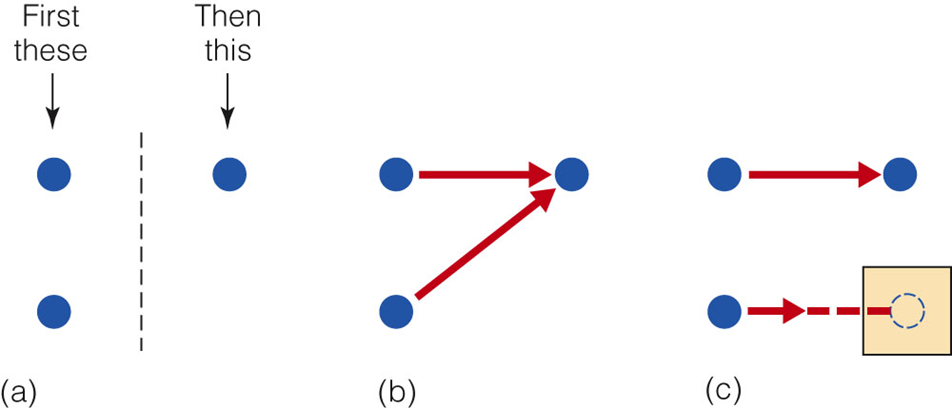
- 返回知覺心理學
